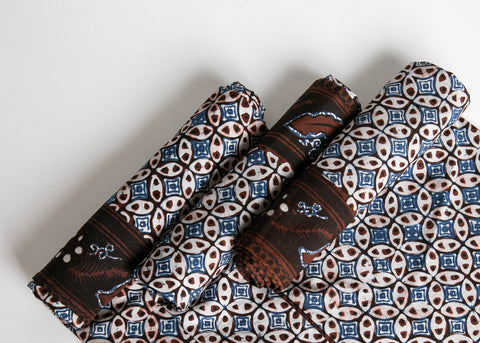One of the oldest batik motifs of the Mataram Sultanate, batik Kawung was known to be a royal favourite in the palaces of Yogyakarta and restricted only to those who had a royal bloodline.

Batik motifs of this time and stature were often inspired by geometric shapes in nature. Batik Kawung borrows its design from kolang kaling, the fruit of the areca palm tree. Cut precisely in half, this fruit offers the oval and diamond shapes that this traditional motif is known for.
With translucent-white seeds that are enjoyed during the month of Ramadan in a fruity dessert called kolak, it is no wonder that batik Kawung symbolizes the reciprocal goodness of living together. To this day, communities uphold the fabric’s meaning by wearing this motif to ceremonies and rituals. Some say that the centre of the four ovals in the motif depicts the universal energy source.
There are three types of motifs for the batik Kawung that are differentiated by size. Batik artisans still use the reference of Dutch colonial coins to indicate the size difference.
Kawung Bribil

The bribil motif is the size of a vintage ½ cent coin it is named after and features designs that create symmetrical circles.
Kawung Sen

Named after the vintage 1 cent coin, the sen motif is also known as the is also known as beton motif because it resembles the seeds of the jackfruit. Batik Kawung sen is often used to cover bodies before burial, a legacy of placing a 1 cent coin on bodies during a funeral.
Kawung Picis

The picis motif, named after its reference to the vintage 10 cent coin. This motif is often paired with the Japanese cosmos flower and feature a yellow and white colour scheme.
REFERENCES
Indonesian:
Geliat Kampung Kolang-Kaling Saat Ramadan
English:
Batik Motif: the Art of Philosophy and Science



